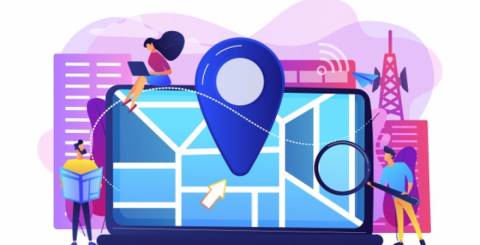Localization Testing: A Goal Towards Superior Quality

The software testing technique in which the behavior of any software, mobile & web-based application is tested for a particular locale, region, or culture is called localization testing. For example: If the software is designed for Mumbai in India, the designed project should be in the Marathi language. Similarly, if the application is made for USA citizens, the time format should be changed as per the USA standard time. From date, time, money to language, each format should follow USA standards.
The abbreviation of localization is l10n, where 10 is the number of letters between l and n. When you thought of localization, you may assume that the documentation and the user interface of an application are designed based on a specific language or locale, but it is more than that.
The customization of the following areas to keep in mind when you hire localization testers to localize your app.
- Keyboard usage.
- Currency used.
- Date & time formats (including numeric formats).
- Symbols, colors schemes, and icons.
- Collating data, aligning, and sorting.
- Various legal requirements.
- Graphics and texts in which a given culture may view as misinterpreted or sensitive.
- Buttons and links.
- Grammar, spelling, and linguistic context.
- spelling, grammar, and linguistic context
Characteristics of Localization Testing
Localized User Interface/ User Interface localization
You can’t develop a software product on inaccurate user interface localization. Menu items, dialog boxes, tooltips are some UI elements that should be consistent and accurate for the product and useful for your users. The user interface is the foundation of any product that requires careful testing.
An example of user interface localization involves modifying the website’s design elements to update new text directions. Arabic is read from right to left. English is read from left to right. English website that is being localized and translated for an Arabic audience needs to be considered a changing factor in text direction into the design. Its functionality should also be a part of the localization test.
Hardware Compatibility
Get localization testing services/L10N testing from the reputed company because you will be able to test the software with a wide variety of testing types. Many software apps don’t work correctly under different hardware/software configurations. In this case, getting a compatible test is necessary because it can reduce customer service expenses at an early software development stage.
Moreover, compatible tests play a significant role in making quality products. To make the hardware and software compatible with the specific region, you can set up a test environment from the localization and globalization testing company that can help you explore the complex compatibility issues.
Localized content/ Content Localization
Content localization refers to a cultural translation that helps understand the unique interests and speaks the language of your target audiences. Nowadays, your content and product must sound authentic within the locales you’re targeting.
Localization creates a connection that improves the product value to the consumers. In fact, researchers have stated that about 57% of consumers confessed that the ability to acquire information in their own language is more valuable than price. Different contents are integrated into the application by professionals as per the local culture, and the test is done to verify whether it is suitable for locals or not.
Specific Language
The test is carried out to verify the language supported by the application in order to understand the compatibility of the program with the language of the particular area.
Localization Automation Testing
Localization testing is non-functional testing where the product’s localized version is cross-checked for specific locale settings or a particular culture. In many cases, the functionalities in a non-localized product are similar to the localized product; hence content and UI are the main areas affected by Localization testing.
Many testers and engineers use globalization testing and localization testing interchangeably, but there is a huge difference between both of them. The focus of globalization is given on the world-wide or global capabilities of the product. However, localization focuses on a particular set of users that belong to a given locale or culture. After that, there is internationalization testing that helps ready the product that is not usable but also ideal for different regions, languages, and locales globally.
Tips for Automation in Localization Testing
- Hire experienced localization testers.
- Select the best automation tools to write scripts.
- Make a localization strategy and conduct testing as per different test scenarios.
- Gather the results and update the scenario as Fail or Pass.
Benefits of Localization Testing
When you choose any company to get localization testing services, you can expect the following benefits:
- Maximize brand popularity as a global brand.
- Reduction in test time.
- Identifying defects in the early stages and launching high-quality software.
- Make the product simple with user-specific date, time, and other parameters.
- Give the best user experience to the market.
- Maximize adoption ratio.
- Provide regional language support to win the heart of locals.
- Overall, cost reduction support.
Localization Testing Checklist
Pre-localization Testing
Pre-localization testing ensures all the required data, information, and documents should be present with the testers before implementing the localization testing. It involves:
- Glossaries for consistency check and reference.
- Get background details about the product.
- Take a reference from previously translated products.
Evaluate Localization Requirements
The localization testing company should evaluate the localization needs to identify the parts or components of the product that may require localization testing, such as script direction, color schemes, suitable pictures, monetary schemes, etc. It also includes:
- Understanding of people for which you perform marketing.
- Identify the localized culture, their language, and financial habits so that the team can deliver & develop a locally and culturally appropriate software application.
- Define business goals for the target market.
- Know your market and competition.
- Investigation of cultural gaps and communication style implications.
Functionality Testing
Functionality testing ensures that the particular functions that are present in the localized app will work correctly. It includes:
- Currency, date, time, and numeric value must follow specific locale standards. Following the rules that are set by the user locale is a must.
- Format separators must work correctly. (eg. Hh:mm:ss).
- Fonts should support across the different regions.
- Interactive text input based on different locales.
Layout & Appearance
It ensures that the target region users will get optimum user experience and don’t experience any discrepancies or issues. In this case, one must focus on:
- Hyphenations and line breaks that should be correct.
- Localized images should be of good quality.
- The product layout should be consistent with the English version and the source.
Region-Specific Testing
Don’t forget to test the various components of the website or software application because that should be region-specific. If you’re planning to take localization testing services/L10N testing facilities, this one always keeps in mind. For region-specific testing, you can ensure the given pointers:
- One must handle formats and currency conversions appropriately.
- Date & time, the format of phone numbers should be accurate & correct as per the target locale or region.
- Product names and licenses should be compatible with country-specific regulations.
- Colors should be appropriate and capable of expressing the desired message.
Test Localization Efforts
To ensure the accuracy of the localized application, software, or website, it is essential to test localization efforts. You can recruit crowd testing services as testers or target market users.
Also:
Check the connectivity of localized products and user interface with testers.
The adoption of localization should be based on the tester’s input.
Results Evaluation
Every organization or software testing company aims to evaluate the result at the end of the localization testing process. During this phase, one can make changes if the targeted business goals fail to meet. It involves”
- Tracking and analytics preparation as it enables segmentation by the target market.
- Compare target market conversion rates to previous conversions.
- ROI (Return on Investment) tracking for the localization project.
Conclusion
Localization testing is a part of software engineering and is performed by the testers' team to ensure that the product will behave according to the local settings or culture. Content and UI are the main things that one can improve with localization testing. The hiring of localization testers must be a priority for testing different items, such as linguistic errors, UI cultural appropriateness, and typographical errors. Lastly, there must be a plan in hand before initiating the test cycle of the localization process because that is the key to success.
Similar Articles
Discover how R&D influences each phase of the software development lifecycle, from planning to continuous improvement. Learn how R&D software fuels innovation, optimizes processes, and ensures product success in today’s tech-driven world.
Business operations experience revolutionary changes through AI implementations in logistics and warehousing processes at high speed.
Delaying custom software risks growth, efficiency, and security. Invest in tailored solutions now to stay competitive and future-proof your business.
The modern business climate is quite dynamic. This much has been for everyone to see. This translates into the need for different ways to improve business agility and efficiency. No wonder companies feel immense pressure to innovate faster and provide exceptional customer experiences.
Businesses are constantly looking for ways to engage clients online. With the advancement of web development, solutions are readily available. Multiple frameworks and tools exist to create dynamic and responsive websites
Have you ever wondered why businesses are sometimes able to always deliver excellent service to customers? It is surprisingly simple: how they integrate a call center into their CRM.
Healthcare continues to evolve significantly because digital technologies are gaining popularity in patient care delivery
The contemporary business environment demands that organizations optimize their contract processes to achieve better compliance and efficiency. This often requires enhanced digital tools and smart systems. This necessity has birthed a whole new industry specializing in contract life-cycle management.
Businesses' dependence on technology is not new. Of course, no. However, what some may not realize is this dependence has resulted in complex IT environments that frequently comprise various systems and apps.









